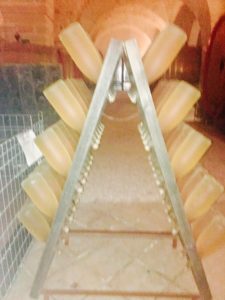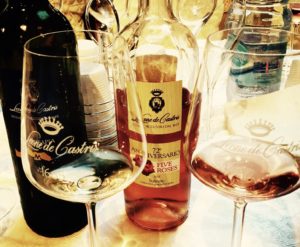Technically, it’s the French who say rosé; the rest of us have  https://www.getyourguide.com/s/?q=puglia&searchSource=7adopted their usage of the word. It’s right that we use the French version; France is the indisputable land of rosé wine. From Côtes du Rhône to Provence, rosé has been a French favorite since long before its recent boom in popularity.
https://www.getyourguide.com/s/?q=puglia&searchSource=7adopted their usage of the word. It’s right that we use the French version; France is the indisputable land of rosé wine. From Côtes du Rhône to Provence, rosé has been a French favorite since long before its recent boom in popularity.
Scoffed at for decades, rosé hasn’t gotten a lot of respect from the typical wine drinker since it went out of fashion in the 1990s. That’s why, when I lived in the Salento region of Puglia, Italy, almost ten years ago, I was surprised to see people drinking the pink stuff. “They’re drinking pink wine?” I thought, “How gauche.”
They called it “Rosato,” but I knew what it was—cheap, sweet swill.
Boy, was I ever wrong.
 Rosato from Puglia, especially Salento, is often raspberry pink, suggesting a “sugar bomb.” But much of the Rosato comes from the Negro Amaro grape, which translates as “dark and bitter.” Instead of a sweet flavor profile, these rosés are surprisingly savory, dry, and full-bodied. My favorite thing about the Salento Rosato is the minerality contributed by the saline air, water, and soil of the peninsula.
Rosato from Puglia, especially Salento, is often raspberry pink, suggesting a “sugar bomb.” But much of the Rosato comes from the Negro Amaro grape, which translates as “dark and bitter.” Instead of a sweet flavor profile, these rosés are surprisingly savory, dry, and full-bodied. My favorite thing about the Salento Rosato is the minerality contributed by the saline air, water, and soil of the peninsula.
Although the color connotes a lesser quality rosé to many, the bright or darker rosés can be more interesting than the pale rosé of Provence, although the pale versions are the current It-Girls of the wine world. There is room for every type of pink wine–the preference largely depends on the cuisine, climate, and taste of the drinker.
Some producers make rosé by blending red and white wines to create a pink wine, but this is not common, and it’s illegal in some places. It’s also common practice to use the saignée method to bleed-off juices during red wine production.
However, the purpose-made rosé is the creme de la creme. The process involves the direct pressing of dark-skinned grapes, leaving the skins in contact with the juice for a few hours to a few days. The longer they are in contact, the more intense the color of the wine.
My opinion on Rosato has evolved in the years since I’ve left Salento. Now when I see someone drinking Rosato/rosé, my reaction is, “They’re drinking pink wine? Where’s mine?”
Rosato from Puglia, Italy
Leone de Castris in Salice Salentino makes “Five Roses” – the first Rosè produced and bottled in Italy. According to the estate, the first sold in the U.S. Bright cherry-red with strawberry notes and rose, Five Roses is primarily Negro Amaro, with 10 percent Malvasia Nera di Lecce. Its name comes from the odd fact that several generations of the de Castris family had five children.
Cantele Wine’s Rosato Rohesia, made from the winery’s flagship Salice Salentino Riserva of Negro Amaro, is a robust, fresh, and flavorful wine with hints of pomegranate and flint.
Tomaresca in northern Puglia makes Calafuria, a crisp and elegant Rosato of Negroamaro grown on their vineyards along the Adriatic Coast. The Tuscan wine dynasty Antinori owns Tormaresca and other wineries around the world, including two in Napa Valley (Stag’s Leap and Antica).
Layne Randolph, Napa Valley Register, August 2017


